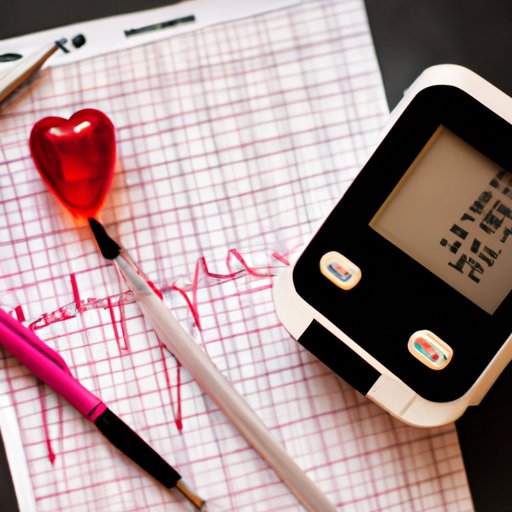
I. Introduction
Heart disease is a common and serious condition that affects millions of people worldwide. One important tool that doctors use to diagnose heart disease is a stress test. In this article, we’ll explore what a stress test consists of and its importance in diagnosing heart conditions.
II. What You Need to Know About Stress Tests: A Comprehensive Guide
A stress test, also known as a treadmill test or exercise test, is a medical procedure used to evaluate heart function under physical stress. Stress tests are important in diagnosing heart conditions because they help doctors detect potential issues that may not show up during a resting electrocardiogram (EKG).
There are several types of stress tests, including:
- Exercise stress test
- Pharmacologic stress test
- Nuclear stress test
III. The Science of Stress Tests: How Doctors Diagnose Heart Conditions
During a stress test, the patient performs physical activity while doctors monitor their heart function. This allows doctors to see how well the heart adapts to increased activity and identify any issues that may indicate heart disease.
Stress tests also help doctors determine a patient’s risk of heart disease by measuring their heart rate and blood pressure response to physical activity. This information can be used to develop a personalized treatment plan that may include medications and lifestyle changes.
Additionally, stress tests can help monitor the progress of heart disease in patients who have already been diagnosed. By tracking changes in heart function over time, doctors can adjust treatment plans as needed.
IV. Breaking Down the Stress Test: Understanding the Procedure and Results
Before the test begins, the patient will be hooked up to an EKG machine to monitor their heart rhythm. During the test, the patient will walk on a treadmill or pedal a stationary bike while the intensity of the exercise increases.
After the test, doctors will examine the patient’s EKG results and compare them to their resting EKG. If any abnormalities are detected, further testing may be needed to confirm a diagnosis.
The results of a stress test can help doctors diagnose heart conditions such as coronary artery disease and heart arrhythmias. They can also help doctors evaluate the effectiveness of treatment plans and determine if further testing or treatment is needed.
V. How to Prepare for a Stress Test: Everything You Need to Know
Prior to a stress test, patients should avoid eating or drinking anything except water for at least four hours. They should also avoid caffeine, tobacco, and alcohol for 24 hours before the test.
Patients should wear comfortable, loose-fitting clothing and comfortable, supportive shoes for the test. They should also inform their doctor of any medications they are taking, as some medications may need to be paused before the test.

VI. Stress Tests: A Vital Tool in Diagnosing Heart Disease
Stress tests are an essential component of diagnosing heart disease and preventing serious complications such as heart attacks and strokes. They are often used in combination with other tests such as echocardiograms and angiograms to provide a more complete evaluation of heart function.
Early detection of heart disease is critical in preventing serious complications, which is why stress tests are often recommended for patients who have risk factors such as high blood pressure, high cholesterol, and a family history of heart disease.
VII. Behind the Scenes of a Stress Test: An Inside Look at the Procedure
During a stress test, the patient will be connected to a variety of monitoring equipment, including an EKG machine and blood pressure cuff. After a brief warm-up period, the intensity of the exercise will gradually increase until the patient reaches their maximum heart rate or experiences symptoms such as chest pain or shortness of breath.
The length of the test can vary depending on the patient and the type of stress test being performed. Overall, patients should expect to spend at least an hour at the testing facility.
VIII. The Importance of Stress Tests: Catching Heart Disease Before It’s Too Late
Heart disease is a leading cause of death worldwide, but early detection and treatment can significantly improve outcomes for patients. Stress tests are a crucial tool in identifying heart disease and developing effective treatment plans.
If you have risk factors for heart disease, such as high blood pressure or high cholesterol, talk to your doctor about scheduling a stress test. By catching heart disease early, you can take steps to protect your heart health and prevent serious complications.
IX. Conclusion
Stress tests are a vital tool in diagnosing heart disease and preventing serious complications such as heart attacks and strokes. By understanding what a stress test entails and taking proactive steps to schedule one if you have risk factors for heart disease, you can help protect your heart health and live a longer, healthier life.





